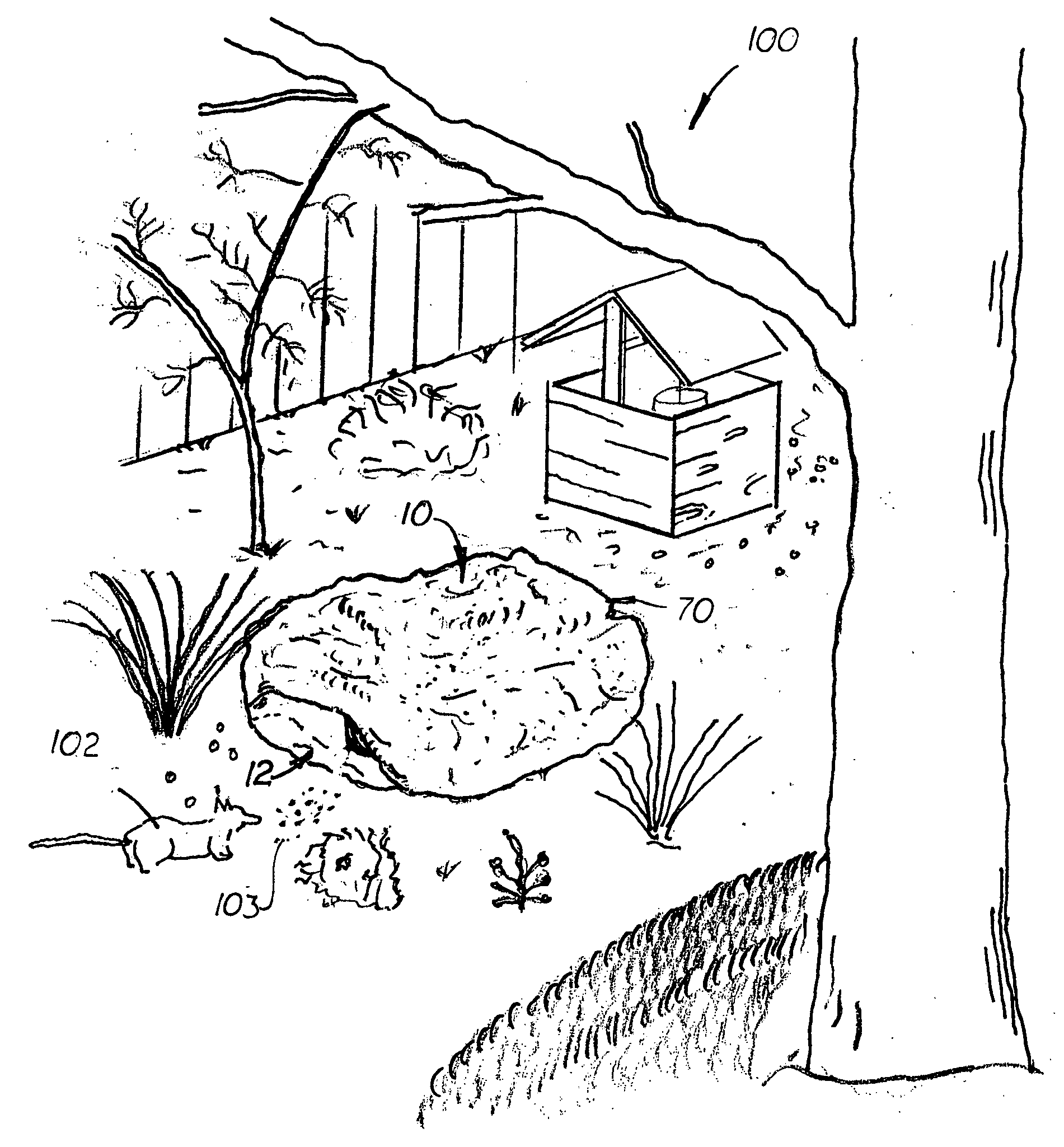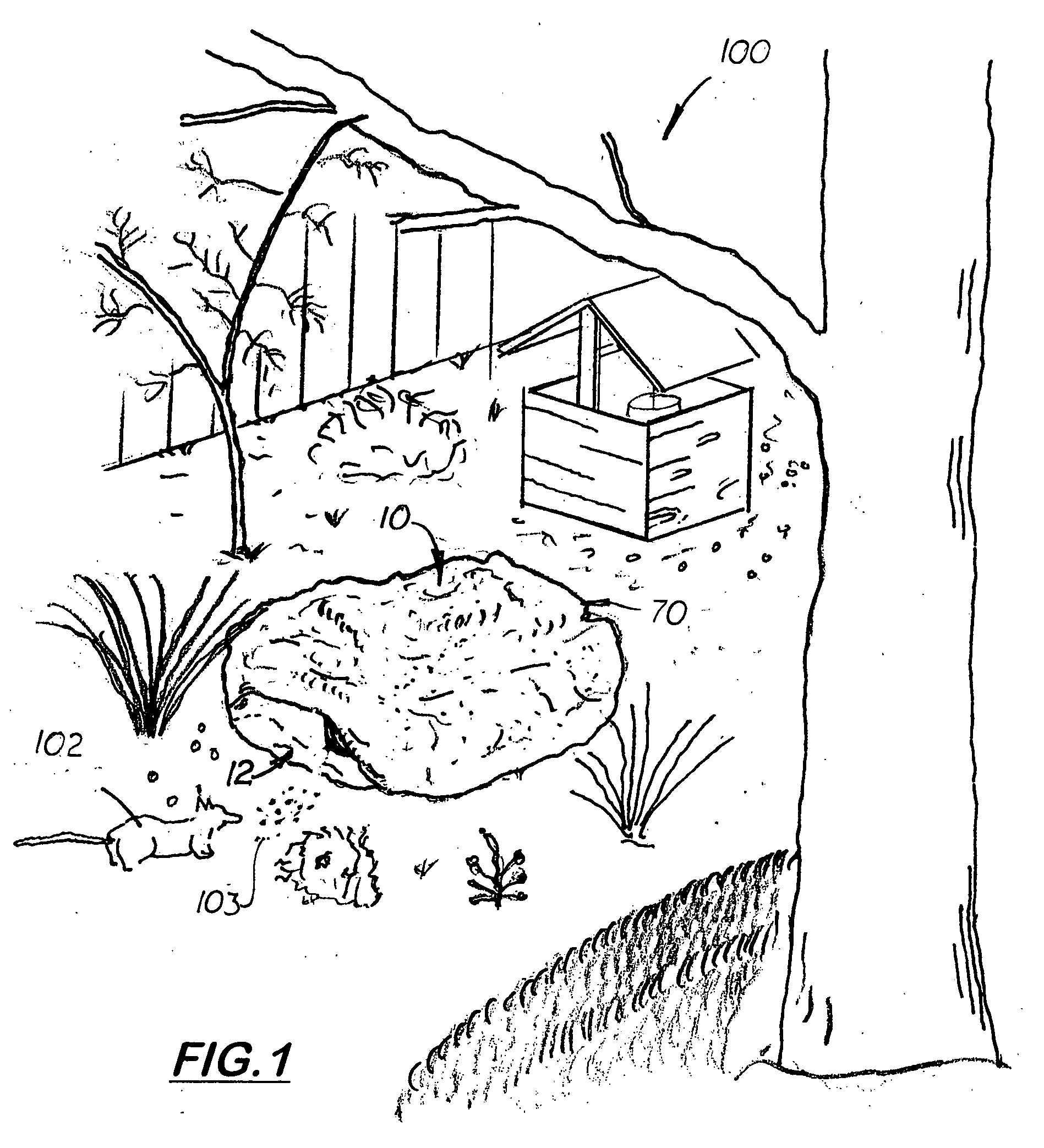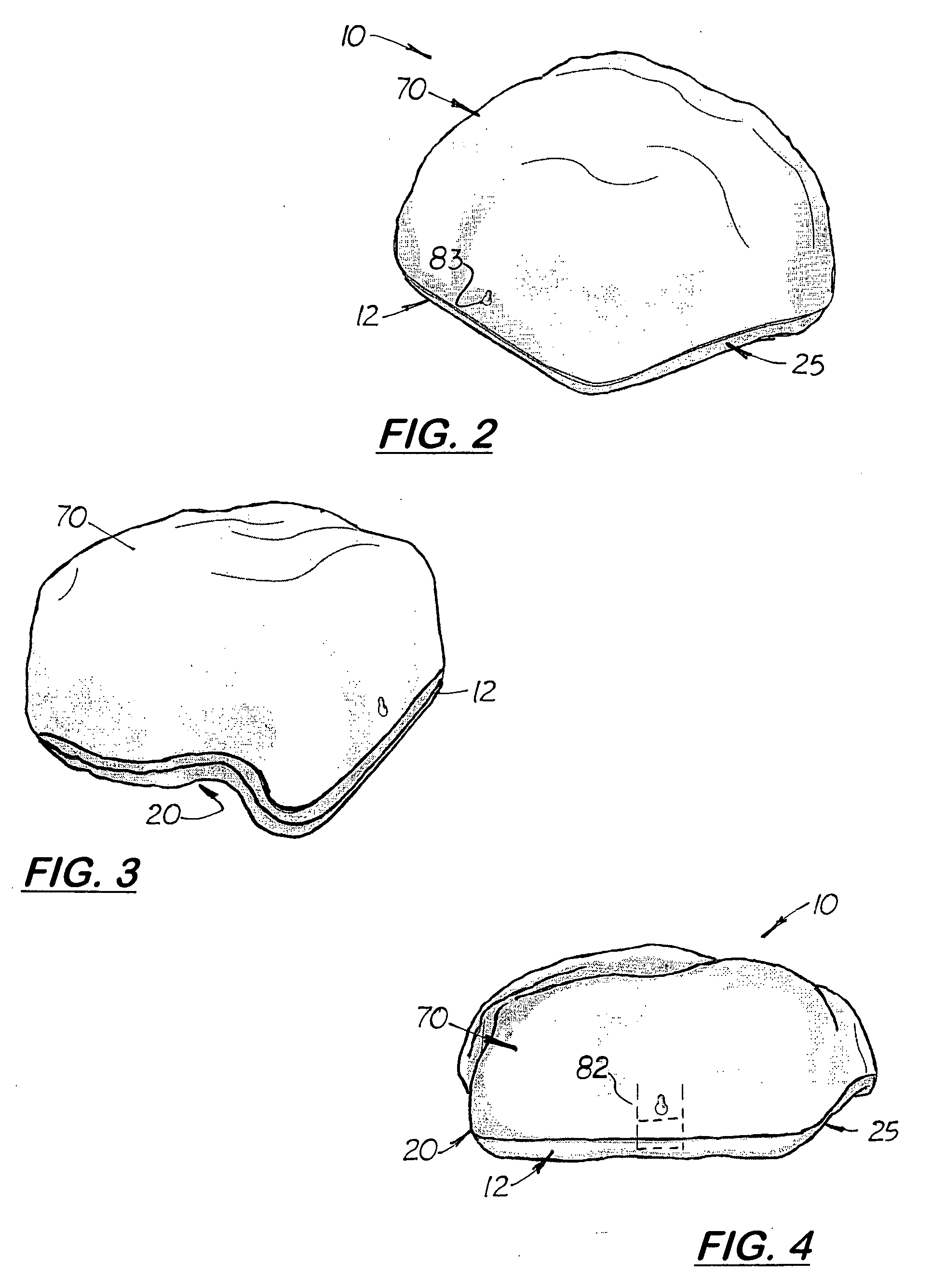Rock simulating pest trap
a trap and rock technology, applied in the field of rock simulating pest traps, can solve the problems of large outer housings, undesirable placement of traps in residences and businesses, and large number of homeowners
- Summary
- Abstract
- Description
- Claims
- Application Information
AI Technical Summary
Benefits of technology
Problems solved by technology
Method used
Image
Examples
Embodiment Construction
)
[0027] Referring to FIG. 1-11, there is, shown and described a pest trap 10 designed to simulate a rock in a garden or landscape area 100. The pest trap 10 includes a substantially flat bottom member 12 and a dome-shaped upper lid member 70. The bottom member 12 and lid member 70 are complimentary in shape so that when the lid member 12 is aligned and registered over the bottom member 70, a simulating three--dimensional rock-shaped structure.
[0028] Formed on opposite sides of the bottom member 12 are two, inward extending tunnel cavities 18, 23. Each tunnel cavity 18, 23 are concave in cross-section and curves slightly rearward and centrally on the bottom member 12. When the trap 10 is placed on the ground 101, the tunnel cavities 18, 23 form two tunnels 20, 25 on opposite sides of the outer housing 11 that leads into a large cavity 65 formed inside the structure. The perimeter edge of the bottom member 12 adjacent to each tunnel cavity 18, 23 is irregular and concave thereby formi...
PUM
 Login to View More
Login to View More Abstract
Description
Claims
Application Information
 Login to View More
Login to View More - R&D
- Intellectual Property
- Life Sciences
- Materials
- Tech Scout
- Unparalleled Data Quality
- Higher Quality Content
- 60% Fewer Hallucinations
Browse by: Latest US Patents, China's latest patents, Technical Efficacy Thesaurus, Application Domain, Technology Topic, Popular Technical Reports.
© 2025 PatSnap. All rights reserved.Legal|Privacy policy|Modern Slavery Act Transparency Statement|Sitemap|About US| Contact US: help@patsnap.com



